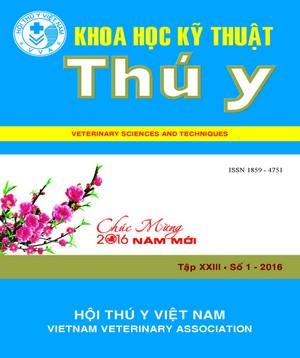Highly pathogenic avian influenza H5N1 viruses in Viet Nam in 2014
Abstract
In April, 2014, Highly pathogenic avian influenza H5N6 virus was firstly detected in the diseased chickens in Lang Son province and it was identified later in many other provinces in the North and the Centre of the country. A total of 10 positive samples with H5N6 virusesfrom outbreaks and surveillance programs were collected in 2014. According to the result of phylogenetic analysis of H5 gene, H5N6 viruses of Viet Nam belonged to the sub-clade 2.3.4.4 within the clade 2.3.4. Of which, 9 viruses were closely related to the H5N6 virus strain (A/Sichuan/26221/2014(H5N6)) that caused a fatal human case in Sichuan province, China in April, 2014 and the remaining virus was closely related with the H5N6 virus of Laos in March, 2014. The analyzed result of molecular characteristics revealed that all of the Vietnamese H5N6 viruses were highly pathogenic to chicken, antigenically similar to Re-5 rather than Re-6 vaccine and NIBRG-14 vaccine was still suitable for the avian-type binding receptors but this suitability might be effected due to loss of a glycosylation site at position 154 in HA. The pathogenicindex of the Vietnamese H5N6 viruses (A/Ck/Vietnam/LangSon/14-A324/2014 (H5N6)) was 2.84. The H5N6 viruses were already transmitted widely in the North and Centre of Viet Nam and varied into at least 2 new lineages. Therefore, the biological alterations of these H5N6 viruses need to be monitored.
điểm /
đánh giá
Published
2018-07-04
Issue
Section
Nghiên cứu khoa học

